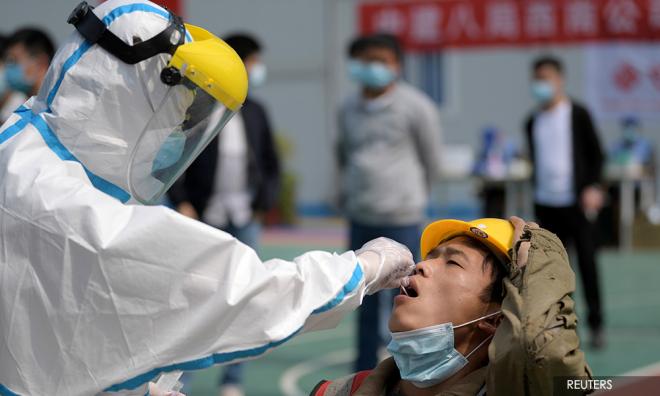
CORONAVIRUS | Covid-19 patients may be most infectious before symptoms first appear, according to a study published in the scientific journal Nature Medicine yesterday.
The study’s authors estimated that pre-symptomatic infections account for 44 percent of the Covid-19 infections they had analysed, but said the figure will vary in different locations depending on how quickly local authorities can detect and isolate patients.
Figures as high as 48 percent and 62 percent have been reported by other researchers in Tianjin and Singapore, they noted, where local authorities have implemented active case finding.
Due to the high proportion of pre-symptomatic transmission, the researchers said measures to control the spread of Covid-19 that only kick-in after symptoms appear would probably have a reduced impact.
This includes measures such as isolation, contact tracing, and requiring people who already show Covid-19 symptoms to wear facemasks and improve personal hygiene; though they maintained that contact tracing remains an important strategy.
“With a substantial proportion of pre-symptomatic transmission, measures such as enhanced personal hygiene and social distancing for all would likely to be key instruments for community disease control,” said the researches at Guangzhou Medical University and Hong Kong University.
The study comes as an increasing number of health authorities worldwide recommend or even compel its citizens to wear facemasks, citing concerns over asymptomatic or pre-symptomatic transmission of the disease.
As of yesterday, Health Ministry director-general Dr Noor Hisham Abdullah maintained that social distancing and good hygiene would provide adequate protection from Covid-19 in everyday situations, though masks may offer additional protection.
Previously, other researchers cited figures ranging from 40 to 60 percent as the proportion of Covid-19 transmission by people with mild or no symptoms.
In the latest paper, the group in Guangzhou and Hong Kong described an analysis of 77 pairs of Covid-19 infectors and infectees, based on publicly available data.
Based on patients’ reports on when symptoms first appeared, the researchers surmised that Covid-19 patients start becoming infectious two to three days before the onset of symptoms.
The infectivity reaches a peak on or just before the onset of symptoms, and then quickly declines over the next seven days.
Drawing comparisons with other respiratory diseases, the researchers said this is more akin to seasonal influenza than the Severe Acute Respiratory Syndrome (Sars), the latter of which is caused by a virus closely related to the one that causes Covid-19.
“Sars was notable because infectiousness increased around seven to 10 days after symptom onset.
“In contrast, influenza is characterised by increased infectiousness short around or even before symptom onset,” they said.
The researchers also analysed the amount of the virus found in a separate group of 94 people who tested positive for Covid-19 and were admitted to Guangzhou Eighth People’s Hospital with mild or moderate symptoms.
“We detected high viral loads soon after symptom onset, which then gradually decreased towards the detection limit at about Day 21.
“There was no obvious difference in viral loads across sex, age groups, and disease severity,” they said.
The findings confirm an earlier, but much smaller study, which was published in Nature on April 1 by a group of researchers in the UK and Germany.
The UK-Germany study examined nine Covid-19 patients, and found the viral loads in all except one patient to be already in decline even in samples collected early in the onset of the disease.
Meanwhile, the Guangzhou/Hong Kong researchers cautioned that they did not have samples from patients who have yet to show symptoms, and reliance on memory to recall when symptoms first appeared could introduce bias in the analysis.
This is because the patients may not recognise the symptoms at first, and may not remember the correct date when asked later.
Also, since their patients at Guangzhou were receiving a variety of treatments while in hospital, this may have an impact on the viral loads measured. - Mkini



No comments:
Post a Comment
Note: Only a member of this blog may post a comment.